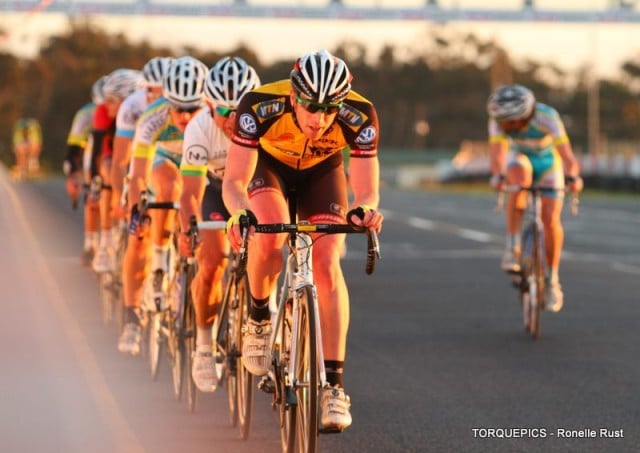5 No-Training Speed Tricks
Your training’s all but done, you’re about as fast as your present conditioning will allow – but there are a few non-fitness-related techniques you can employ to up your speed and performance on race day.
 Your training’s all but done, you’re about as fast as your present conditioning will allow – but there are a few non-fitness-related techniques you can employ to up your speed and performance on race day. – By Mark Carroll
Your training’s all but done, you’re about as fast as your present conditioning will allow – but there are a few non-fitness-related techniques you can employ to up your speed and performance on race day. – By Mark Carroll
Get Aero With Kit
Done that already, have you? You’ve got the aero frame, the deep-section carbon wheels, even aero-textured clothing that fits you snugly. If you haven’t, then sure, these are three potentially expensive ways to buy some speed. But here’s a cheap way: extra safety pins. Most people use just the four pins they get with their race number, and spend the entire race pulling a small, flapping kite around. Use more pins, and secure that number better – it’ll make a difference to your speed.
Get Aero With Your Body
On a flat road, 80% of your power is used to overcome air resistance, so bend your elbows and tuck your arms in to reduce your frontal area and make your body as small as possible.
To illustrate the effect of getting aero, riding a flat road for 40km at 200 watts with your hands on the hoods will take about 76 minutes. Ride the same course at the same power with your hands on the drops, and the time reduces to 70 minutes. Add tubular tyres and (although they’re not allowed for road races) TT aero bars, and the same 40km course at 200 watts will be completed in… 64 minutes. That’s a big difference.
Drafting
Many cyclists underestimate this skill. At every race I see cyclists sitting in the wind, or tearing down the side of the bunch to get to the front, or leaving a big gap between themselves and the rider in front. And much of this is due to lack of concentration.
Getting near the front is always best – you don’t want to be caught right at the back. But pay attention to the bunch, and be patient; there will always be somebody impatient coming down the outside – and taking in all the wind – to try to get closer to the front. Watch for them coming by, and hop on their wheel for a free ride.
To freshen up your drafting skills, get yourself into a few last-minute group rides, read the bunch, read the wind, always place yourself near the front as the hills approach, and spend the entire time developing your skill at using as little energy as possible.
Brake Less
This takes skill, practice, and acute awareness of your surroundings. Many cyclists hit the brakes more than they need to, and then waste a match trying to get their bike speed up again. Going into a corner, don’t sit tight behind the wheel in front; rather, find a gap that allows you to maintain the bike’s speed into the corner without using your brakes, while allowing for a gentle pedal to keep up with the bunch.
When reaching the base of a descent – and especially when that descent leads into a climb – the last thing you want to have to do is brake to avoid hitting the wheel in front of you. Again, position yourself so you can keep all the bike speed and momentum without braking, and while still keeping perfect contact with the bunch. Practice makes perfect.
Spotless Bike
Having a filthy bike and drivetrain can waste a substantial amount of energy. Dried-up old lube and road-dirt will clog up the jockey wheels, all the chain links, and the gears, making pedalling tough and forcing you to use more energy than normal. A cleaner bike leads to more efficient energy usage – energy you can save for that big attack.
Mark Carroll owns Cadence Cycling Performance & chairs the CSA Coaching Commission.
READ MORE ON: Skills strength training programmes

